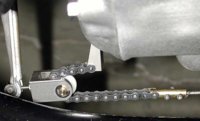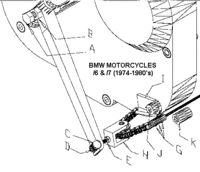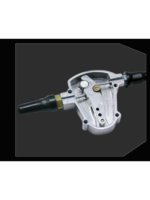I thought I'd share another project I've been working on. An over-center spring assist for the clutch actuator (worm). My ol' panhead had a moustrap clutch, and I thought that was a quite clever thing. So, wanted see if a similar principle could be used on my XS1B.
The stock clutch actuator (worm) sits all by its lonesome in a cavernous side cover.

A view up into the left engine (drive sprocket) area shows a lot of unused space.

Maybe we can stick a bunch of stuff in there?
The stock clutch actuator (worm) sits all by its lonesome in a cavernous side cover.
A view up into the left engine (drive sprocket) area shows a lot of unused space.
Maybe we can stick a bunch of stuff in there?
Last edited:





